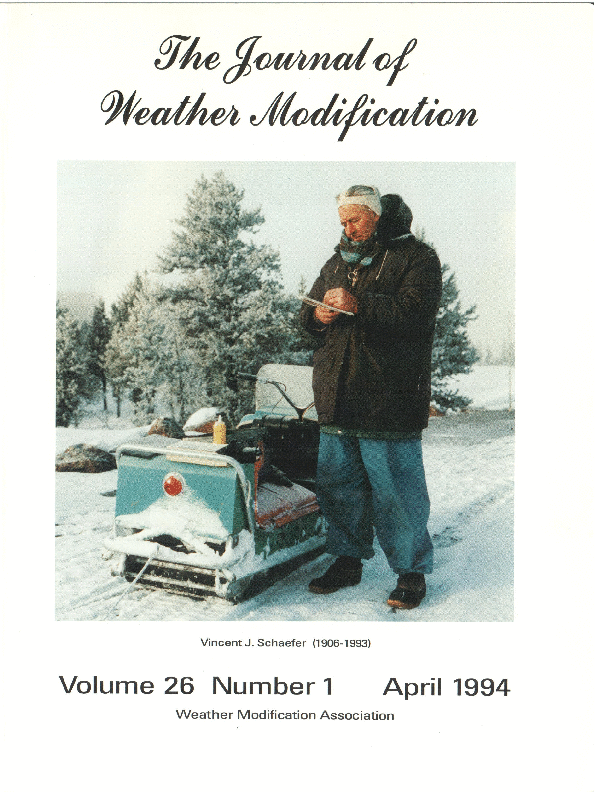Implications of Early 1991 Observations of Supercooled Liquid Water, Precipitation and Silver Iodide on Utah's Wasatch Plateau
DOI:
https://doi.org/10.54782/jwm.v26i1.288Abstract
The Utah/NOAA Atmospheric Modification Program conducted an observational program in early 1991, with additional support from the Bureau of Reclamation. A summary is presented of observations obtained on the Wasatch Plateau of central Utah which includes SLW (supercooled liquid water), precipitation, Agl (silver iodide ice nuclei), air and dewpoint temperature, and wind velocity. With the exception of Agl ice nuclei, measurements were made on 20 days with storm conditions. Silver iodide was monitored during part or all of a subset of 12 days when valley Agl generators were being operated. It is shown that abundant SLW existed during many hours, and a large fraction of these hours did not have precipitation observed on top the Plateau. The SLW flux over the Plateau-top’s windward edge exceeded the average precipitation on top the Plateau. These findings suggest significant seeding potential may exist. Acoustical ice nucleus counter observations were adjusted to temperatures typical of Agl plume tops. Aircraft measurements showed the plume tops were usually less than 1 km above the Plateau. The adjusted ice nucleus observations suggest effective Agl ice nuclei concentrations were too low for productive seeding much of the time when SLW was present. The main problem appears to be the warm temperatures of the SLW during most storm periods. Effective concentrations of Agl ice nuclei are not expected at such temperatures with the generators and release rates used in the Utah operational seeding program. However, these estimates were based on a 1981 generator calibration in a cloud simulation laboratory which may not be totally representative of winter orographic clouds. Direct observations are needed of ice particle concentrations caused by seeding orographic clouds for the range of conditions typical of winter storms. The challenge is to develop means of routinely targeting the SLW zone with adequate concentrations of seeding-caused ice crystals which can start the precipitation formation processes in naturally inefficient clouds. A number of approaches are suggested which could make the Utah operational seeding program more effective.Downloads
Issue
Section
Scientific Papers
License
Authors that submit papers for publication agree to the Journal’s copyright and publication terms. Authors retain copyright and grant the journal right of first publication with the work simultaneously licensed under a Creative Commons Attribution License that allows others to share the work with an acknowledgement of the manuscript’s authorship and initial publication in Journal of Weather Modification. Authors are able to enter into separate, additional contractual arrangements for the non-exclusive distribution of the journal’s published version of the work (e.g., post it to an institutional repository or publish it in a book), with an acknowledgement of its initial publication in the Journal of Weather Modification. Authors are permitted to post their work online (e.g., in institutional repositories or on their website) prior to and during the submission process to encourage productive exchanges and greater citation of the published article.
Articles are published online using restricted access for the first year. After the first year, articles are made freely available online. Immediate open access for an article may be obtained by the author paying an open access fee which is in addition to the normal page changes. Authors are expected to honor a page charge in order to support publication and distribution of the journal. After the author approves the gallery formatted version for publication, the Weather Modification Association’s Secretary will invoice the corresponding author for the page charges and payment is due within 30 days.
How to Cite
Implications of Early 1991 Observations of Supercooled Liquid Water, Precipitation and Silver Iodide on Utah’s Wasatch Plateau. (1994). The Journal of Weather Modification, 26(1), 19-32. https://doi.org/10.54782/jwm.v26i1.288




